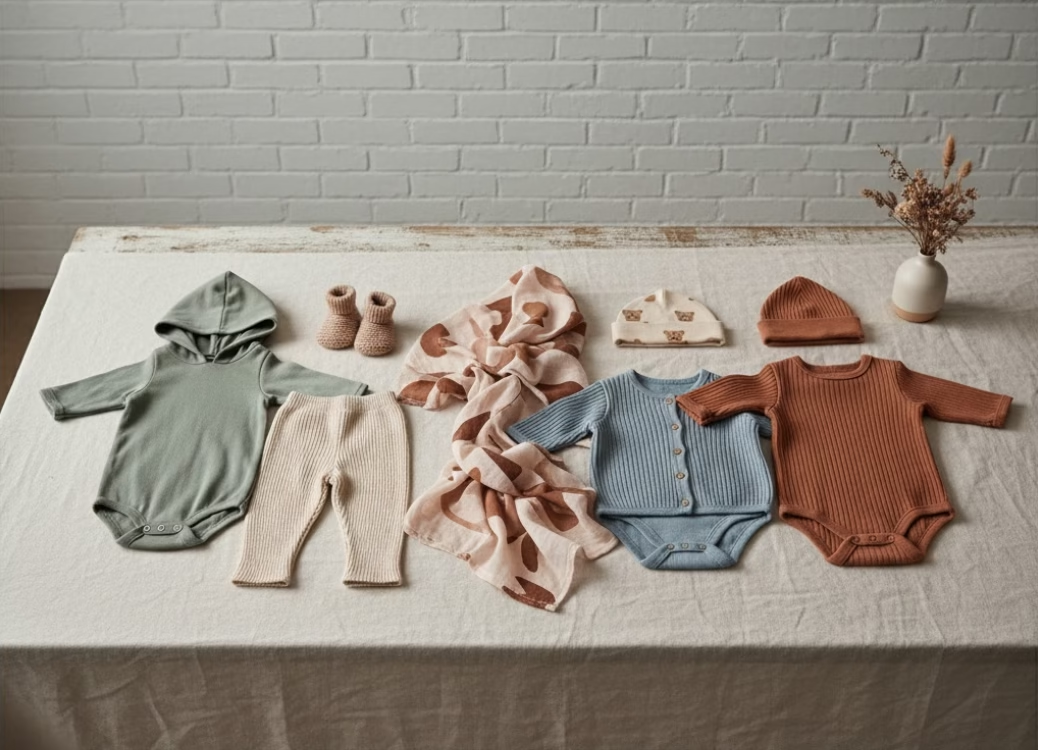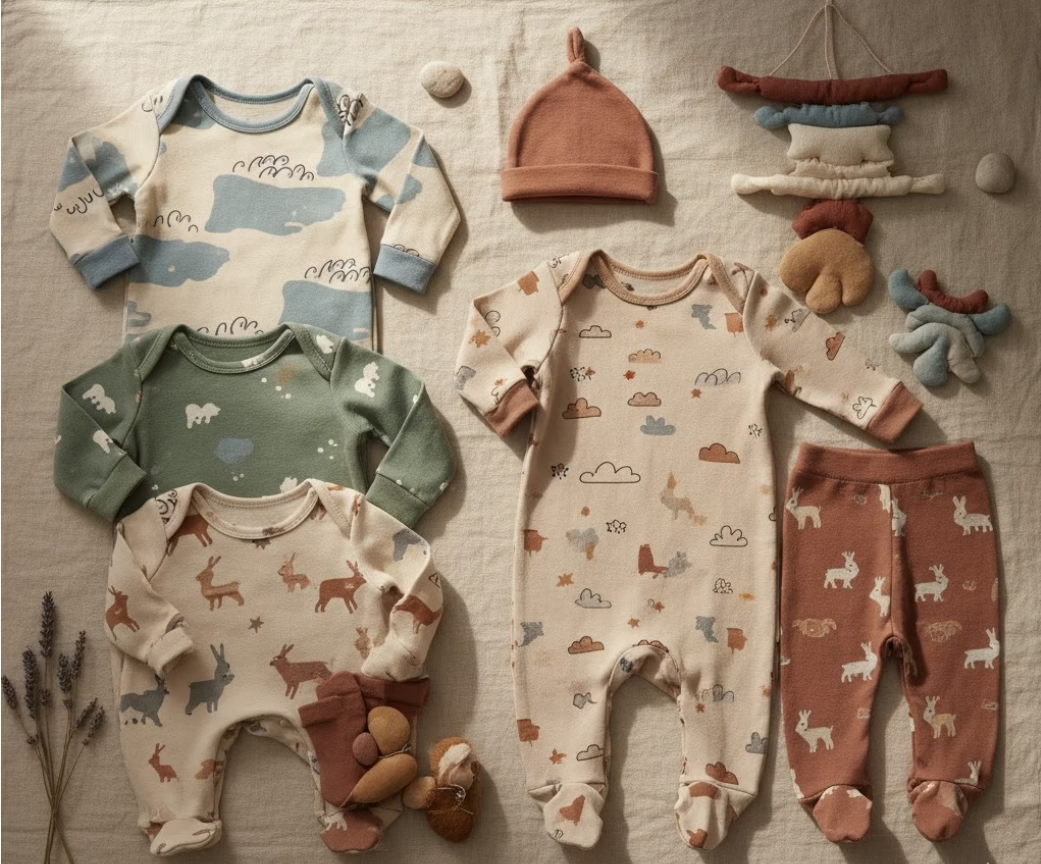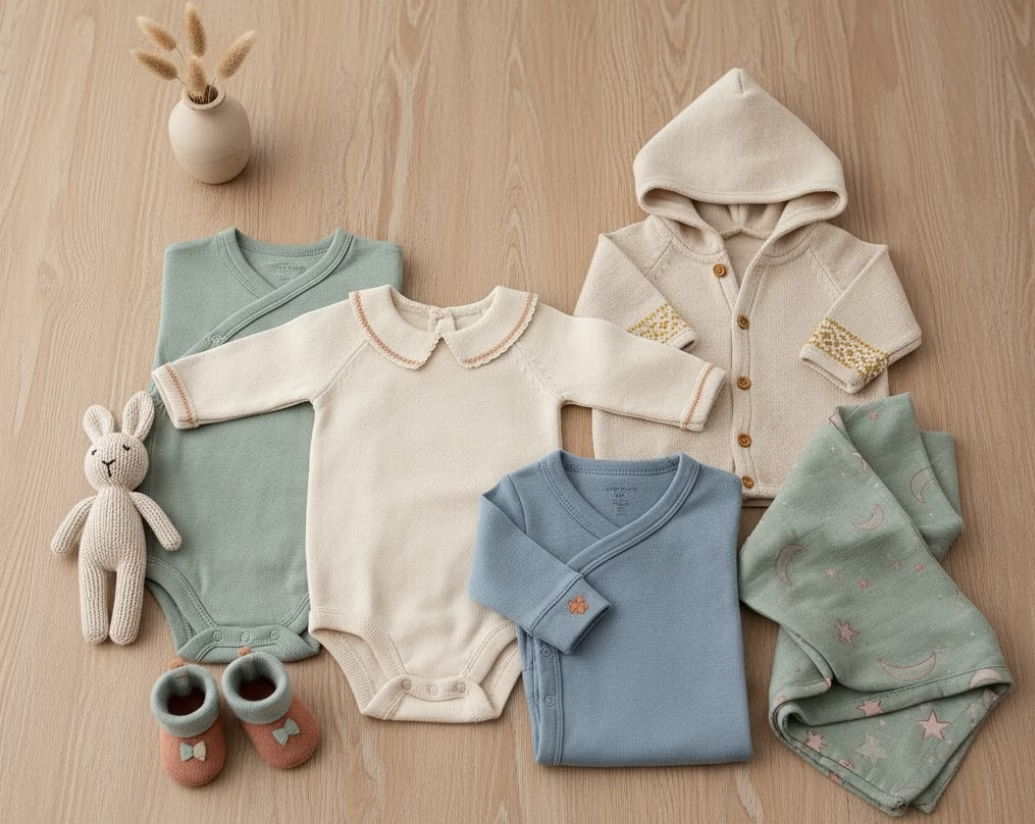MOQ Depth Guide: How Startup Brands Balance Order Volume and Profitability?
MOQ Depth Guide: How Startup Brands Balance Order Volume and Profitability?
Inhalt
- 1 MOQ Depth Guide: How Startup Brands Balance Order Volume and Profitability?
- 1.1 Introduction: MOQ, The Barrier to Startup Brand Growth
- 1.2 5 Key Strategies: Startup Brands Mastering the MOQ-Profitability Balance (Addressing the Pain Point)
- 1.2.1 Strategy 1: Implement “Fabric Consolidation” and SKU Integration
- 1.2.2 Strategy 2: Adopt a “Core + Seasonal” Dual Ordering Model
- 1.2.3 Strategy 3: Utilize “Virtual MOQ”: Establishing Long-Term Partnership Commitment
- 1.2.4 Strategy 4: Optimize Supply Chain Layering: Distributing Process Complexity
- 1.2.5 Strategy 5: Data-Driven Baby Clothing Marketing Forecasting
- 1.3 Strategic Execution Summary
- 1.4 Häufig gestellte Fragen (FAQ)
Introduction: MOQ, The Barrier to Startup Brand Growth
Startup brands, particularly Product Managers and Designers entering the children’s wear (Herstellung von Babykleidung) sector, face a common and pressing pain point: Minimum Order Quantities (MOQ) are too high, leading to significant capital tie-up and inventory risk. Traditionally, high MOQs are necessary to reduce factory production costs, but this creates a massive hurdle for brand scaling. This professional report aims to provide 5 actionable strategies to help your Marke für Babykleidung negotiate MOQs effectively, optimize the supply chain, and achieve profitability without sacrificing quality.
Sie haben keine Ahnung, wie man Kinderkleidung herstellt? Dies ist die endgültige Fassung, All-in-One-Leitfaden die Kinderbekleidungsindustrie nicht die Sie haben sollen.
5 Key Strategies: Startup Brands Mastering the MOQ-Profitability Balance (Addressing the Pain Point)
We offer the following 5 pragmatic and data-backed strategies to help you gain the advantage in Herstellung von Babykleidung:

Mit 17 Jahren Erfahrung bietet petelulu eine umfassende Palette von
Fertigungsdienstleistungen vom Entwurf bis zur Lieferung.
Beginnen Sie bei Null, schaffen Sie Ihre eigene Marke.
17+
im Dienste der 10 wichtigsten amerikanischen Marken
15+
im Dienste der 10 wichtigsten australischen Marken
12+
im Dienste der 10 wichtigsten europäischen Marken
Kontaktieren Sie uns, um ein Angebot zu erhalten.👇
Strategy 1: Implement “Fabric Consolidation” and SKU Integration
We recognize that the core driver for factory MOQs is the raw material purchasing volume. Startup brands must proactively consolidate multiple SKU designs (e.g., T-shirts, pants, dresses using the same fabric and color) into a single fabric batch.
-
Actionable Steps: Product Managers need to aggregate the demand for various sizes and styles into one total fabric MOQ. For example, instead of ordering 100 T-shirts in three different colors separately (total MOQ 300 units), we design T-shirts, pajamas, and blankets using the identical base fabric, consolidating the purchase to 1,000 meters of material to meet the factory’s minimum purchase requirement.
-
Maßgebliche Einsicht: This “horizontal integration” approach shifts the brand’s negotiation focus from “units” to “material,” which typically results in a 15-20% reduction in MOQ for your Marke für Babykleidung.
Strategy 2: Adopt a “Core + Seasonal” Dual Ordering Model
To mitigate inventory risk, your team should employ a differentiated ordering strategy.
-
Core Styles (70% of Orders): For evergreen, best-selling classics, we accept a slightly higher MOQ to achieve a lower unit cost. These styles have lower risk and help amortize annual costs.
-
Seasonal/Trendy Styles (30% of Orders): For higher-risk, trend-driven designs, we request the factory use in-stock or standard, widely available colors and proactively seek low-MOQ pilot production runs. This significantly increases the agility of Herstellung von Babykleidung and effectively reduces capital tie-up.

Strategy 3: Utilize “Virtual MOQ”: Establishing Long-Term Partnership Commitment
Factories value long-term, stable relationships more than a single large order. We advise the brand to proactively propose a multi-year “Virtual MOQ” contract.
-
Actionable Steps: Commit to achieving a specific total production threshold over the next three years (e.g., 30,000 units), rather than demanding 10,000 units in a single order. In return, the brand requires the factory to agree to a 50% reduction in the MOQ for the first year’s orders.
-
Conveying EAT: This strategy communicates your professionalism and long-term planning capabilities to the supplier, helping your Marke für Babykleidung build trust and gain greater negotiating leverage.

Strategy 4: Optimize Supply Chain Layering: Distributing Process Complexity
MOQ generally increases with the complexity of the production process. We recommend breaking down the production flow across different specialized suppliers.
-
Layering Strategy: Basic sewing and cutting (high MOQ, low unit cost) are assigned to a large factory; while highly complex processes, such as custom printing or special embroidery (low MOQ, high unit cost), are outsourced to specialized processing workshops.
-
Data Support: By shifting complex finishing processes to suppliers who specialize in small-batch customization, the brand can effectively reduce the final product’s MOQ by 25% without changing the overall design.

Strategy 5: Data-Driven Baby Clothing Marketing Forecasting
MOQ pressure often stems from a lack of confidence in sales forecasts. We must arm our Marketing für Babykleidung with data.
-
Actionable Steps: Utilize social media pre-sale data, small-scale test marketing, or crowdfunding campaigns to validate market demand for new designs before placing the final order. We use specific, verifiable customer interest data (e.g., pre-order conversion rate reached X%) to negotiate with the factory, proving the certainty of the order and persuading them to accept a lower MOQ.
Strategic Execution Summary
By systematically implementing these 5 strategies, Product Managers and Designers can effectively solve the capital and inventory pressure caused by high MOQs, taking control of the Herstellung von Babykleidung Prozess.
For more information on children’s clothing design or manufacturing, please contact us.

Mit 17 Jahren Erfahrung bietet petelulu eine umfassende Palette von
Fertigungsdienstleistungen vom Entwurf bis zur Lieferung.
Beginnen Sie bei Null, schaffen Sie Ihre eigene Marke.
17+
im Dienste der 10 wichtigsten amerikanischen Marken
15+
im Dienste der 10 wichtigsten australischen Marken
12+
im Dienste der 10 wichtigsten europäischen Marken
Kontaktieren Sie uns, um ein Angebot zu erhalten.👇
| Strategy No. | Core Action (Active Voice) | Expected Effect/MOQ Impact |
|---|---|---|
| Strategy 1 | We consolidate fabric demand across multiple SKUs and centralize raw material purchasing. | Shifts negotiation from “units” to “fabric,” reducing MOQ by 15-20%. |
| Strategy 2 | We use low-MOQ pilot runs for high-risk, trendy styles. | Reduces inventory risk and enhances market agility. |
| Strategy 3 | We sign multi-year “Virtual MOQ” partnership agreements with suppliers. | Immediate 50% MOQ reduction in the first year, establishing long-term trust. |
| Strategy 4 | We decompose the production flow, outsourcing complex processes to specialized workshops. | Effectively reduces the final product MOQ by approximately 25%. |
| Strategy 5 | We use pre-sale data to validate demand and persuade the factory with data. | Increases order certainty, facilitating negotiations for lower MOQs. |
Häufig gestellte Fragen (FAQ)
Q1: Are factories generally willing to accept “Virtual MOQ”? A: Yes. For factories that value stable production, long-term, committed volume is more valuable than a single large order. We must demonstrate that your Marke für Babykleidung has a clear Marketing für Babykleidung and growth plan.
Q2: Does implementing Strategy 1 (Fabric Consolidation) sacrifice design variety? A: Quite the opposite. You only need consistency in the fabric base (e.g., all 100% organic cotton, medium weight). Design variations (e.g., neckline, prints) can still be diverse. This is an effective way to balance cost and creativity in Herstellung von Babykleidung.
Q3: How do we quantify the profitability improvement from MOQ strategies? A: Primarily through two metrics: Inventory Turnover Rate (lower MOQ increases turnover) and Capital Tie-Up Cost (reducing unnecessary inventory frees up cash flow). Improvements in these metrics directly translate to enhanced profitability.
Über den Autor
Xhiney, die Gründerin von Petelulu, verfügt über mehr als 20 Jahre Erfahrung in den Bereichen Design, Produktion und internationaler Handel von Kinderbekleidung. Ein Beitrag zu Kinderkleidung und Junior Magazinen hat Xhiney 17 Jahre lang mit hochwertigen Kinderbekleidungsmarken in Europa und den USA zusammengearbeitet und bietet Expertenwissen und Unterstützung.

